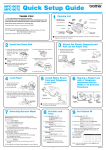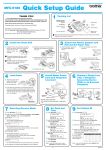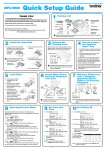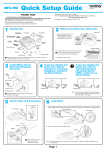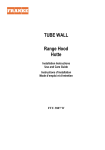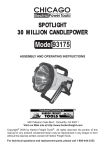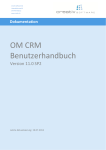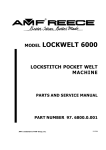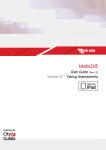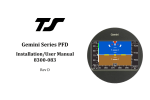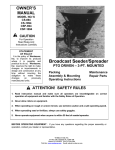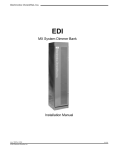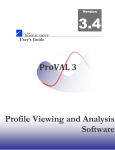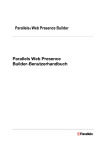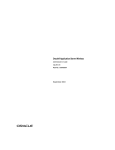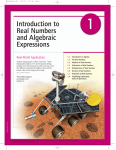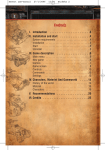Download ¡3?0丐 ²(!部y± ²%!1 ²-J!※ ²(!都y± ²#Q!釩y± ²81部{± ²#Q!閉y± ²%!旭
Transcript
DDV
Data Deja View's
Guide to
Understanding and Using
Application Coyote
Coyote-Produced Symbols:
±
y
¡
³
!
²²
±²
{
¡
³
1
8
±°
°
¢
!
%
±²
y
«
³
!
Q
#
!
±
%²
²
¦
±(
°
¡
!
J
±
y
¬
³
!
Q
#
±²
y
£
³
!
(
¦²
¢
¤
0
3
¦¡
¤
0
¡
¢
?
3
Application Coyote symbol generation packages may
be individually downloaded from ESRI’s ArcScripts.
0
Copyright 2005 by Jim Mossman
Table of Contents
Page
Introduction
. . . . . . . . . . . . . . . . . . . . . . . . . . . . .
Section 1 – Application Overview . . . . . . . . . . . . . . . . . . . . .
3
4
Section 2 – Hardware and Software Requirements
2.1
2.2
2.3
2.4
Development Environment
User Environment . . . .
Installation Instructions . .
Licensing and Rights . . .
.
.
.
.
.
.
.
.
.
.
.
.
.
.
.
.
.
.
.
.
.
.
.
.
.
.
.
.
.
.
.
.
.
.
.
.
.
.
.
.
.
.
.
.
.
.
.
.
.
.
.
.
.
.
.
.
.
.
.
.
.
.
.
.
.
.
.
.
5
5
6
6
Problem Overview . . . . . .
Solution Overview . . . . . .
Symbol Creation Process . .
The Project Plan . . . . . . .
Application Limitations . . . .
Potential Audience or “Market”
.
.
.
.
.
.
.
.
.
.
.
.
.
.
.
.
.
.
.
.
.
.
.
.
.
.
.
.
.
.
.
.
.
.
.
.
.
.
.
.
.
.
.
.
.
.
.
.
.
.
.
.
.
.
.
.
.
.
.
.
.
.
.
.
.
.
.
.
.
.
.
.
.
.
.
.
.
.
.
.
.
.
.
.
.
.
.
.
.
.
7
7
10
11
11
12
4.1 Mission Creep . . . . . . . . . . . . . .
4.2 Features, Design Decisions and Tradeoffs
4.2.1 Master Table Interface . . . . . .
4.2.2 Global Layer Color Changes . . .
4.2.3 Symbol Layer Constructs . . . . .
4.2.4 Logic Control Switchover . . . . .
4.2.5 Headed Symbols . . . . . . . . .
4.2.6 Symbol Name Prefix/Suffix . . . .
4.2.7 Directional Shields . . . . . . . . .
4.2.8 Programmed Layer Color Control .
4.3 Coyote Feature Comparisons . . . . . .
4.4 Application Workflow . . . . . . . . . . .
4.5 Future Application Directions . . . . . . .
.
.
.
.
.
.
.
.
.
.
.
.
.
.
.
.
.
.
.
.
.
.
.
.
.
.
.
.
.
.
.
.
.
.
.
.
.
.
.
.
.
.
.
.
.
.
.
.
.
.
.
.
.
.
.
.
.
.
.
.
.
.
.
.
.
.
.
.
.
.
.
.
.
.
.
.
.
.
.
.
.
.
.
.
.
.
.
.
.
.
.
.
.
.
.
.
.
.
.
.
.
.
.
.
.
.
.
.
.
.
.
.
.
.
.
.
.
13
13
13
13
14
15
15
16
18
19
19
20
20
.
.
.
.
.
.
.
.
.
.
.
.
.
.
.
.
.
.
.
.
.
.
.
.
.
.
.
.
.
.
.
.
.
.
.
.
.
.
.
.
.
.
.
.
.
22
22
23
23
24
Section 3 – Project Definition
3.1
3.2
3.3
3.4
3.5
3.6
Section 4 – Application Features
Section 5 - Learning and Using the Application
5.1
5.2
5.3
5.4
5.5
Introductory Forms . . . . . .
Wizard User Option . . . . .
Experienced User Option . .
Error and Warning Messages
Help File . . . . . . . . . . .
2
.
.
.
.
.
.
.
.
.
.
.
.
.
.
.
.
.
.
.
.
.
.
.
.
.
.
.
.
.
.
Introduction
To DDV this was an interesting project; the search for a problem solution, the font and
system design innovations, and the new user features – this is what made this project fun
and, in the author’s opinion, successful. It is to be hoped that the users will concur.
Suggested Use – The Guide is meant as an adjunct learning tool. The Introduction and
Wizard user interface remain as the primary tools for first-level learning about and using
Coyote.
The Guide is meant to serve two audiences. First, for prospective application users, it gives
an overview of what Coyote is all about and as much detail about its design and any features
of interest as they are likely to need to decide if it will be beneficial for them to download and
install one or more Coyotes. The prospective user may want to read Sections 1 and 2, and
then browse Sections 4 and 5.
A second purpose is to give current Coyote users more background as to the design,
implementation tradeoffs and features inherent in Coyote. Understanding these areas will
enable users to make better use of the more advanced Coyote capabilities. For these users,
reading of Sections 3 and 4 is recommended.
Designing and implementing this application presented some interesting challenges. There
were several areas where tradeoffs between application response time, user functionality
and implementation effort offered difficult choices. The tradeoffs have been discussed in this
Guide to give Coyote users an understanding of why Coyote operates as it does when in
some cases, from the user perspective alone, another choice might have been preferable.
Distribution and Updates - Distribution of the Guide is made through ESRI’s ArcScripts. It
will be updated only if significant new features are implemented in new Coyote versions. It is
intended to convey understanding of the overall application concept and its major feature
capabilities, rather than as documentation for each individual Coyote implementation. This
approach was necessitated by DDV workload concerns.
3
SECTION 1. - APPLICATION OVERVIEW
Project Definition – Application Coyote is a family of symbol generation packages for pre-numbered
highway symbols. Coyote was designed to address three problems Data Deja View (DDV) has
encountered while making these and other pre-numbered symbols for the ESRI user community:
1. The large update workload due to route number addition and change requests,
2. The impracticality of using very large symbol sets in ArcMap, and
3. The impracticality of meeting all jurisdictions’ needs.
The chosen solution provides fonts and an executable capable of producing symbols for a very wide
range of route numbers for one type of highway shield; e.g. county routes. A Master table of routes and a
user interface are provided to allow the user to mark the routes for which symbols are to be generated.
The executable checks the Master Table to see if a symbol is to be created. Different packages of
executables, fonts, etc. are provided for each different shield type.
A font creation workload problem was overcome by changing the traditional symbol layer design
methodology. Some of the gains from this were negated by the need to implement artificial kerning in
order to retain high quality symbols. The normal DDV symbol creation process was modified to use a
Master Table of route identifiers and to accept user-provided run parameters. Forms-based user
interfaces were also included.
The potential user base for Application Coyote is very large, encompassing all Wintel-based ArcGIS 9
Desktop users with mapping needs within the United States that include highway features. Coyote
Stylesets, once created, can also be used with ArcGIS 8.
Coyote currently exists in Interstate, US-Route and county-road versions. A generic state route version is
under development. Application Coyote is distributed free of charge from ESRI’s ArcScripts.
Application Features – Coyote lives up to its namesake’s reputation as a “trickster”, employing a number
of design and programming tricks to: save implementation effort, improve application response times and
provide new user-capabilities. Coyote features include:
1.
2.
3.
4.
5.
6.
7.
8.
An easy-to-use Master Table Interface;
The ability to create an alternate symbol layer color scheme for user-selected symbols;
For some symbols, the capability to create different designs using the same set of symbol layers;
The ability to use either complete Master Tables or, where alpha route numbers are not needed,
smaller versions of the Master;
Availability of new “headed” routes (Scenic, Toll, Detour, etc.);
Symbol naming capabilities that make it much easier to use ArcMap’s Match Symbols to a Style;
For Interstate symbols, the addition of shields with north, south, east or west designations; and
Automatic programmed layer color control for some “headed” routes.
Learning and Using the Application – Introductory forms and a wizard-based user interface are the
primary tools for learning and first using this application. Wizards provide step-by-step guidance through
the symbol creation process. Their forms are usually limited to one or two closely related tasks. They
may include information about the task, tips for carrying it out and/or recommendations relative to it.
There is also a much more compact user interface for experienced users. Message box error and
warnings messages are used extensively in both user interfaces.
The application’s Help file covers problem areas, troubleshooting and common application information in
detail. With the exception of version and required files information, Help is generic. It is left to the
introductory forms and the wizards to provide information on application features, which vary from one
Coyote version to another.
4
SECTION 2 - HARDWARE AND SOFTWARE REQUIREMENTS
2.1 Development Environment
The application was developed using Microsoft Visual Basic 6.0 (SP-3) with standard components.
Symbol generation coding uses as references the ESRI Framework Object Library and the ESRI Display
Object Library (both from ArcGIS 9 SP-3). The database is Microsoft Access 2000.
Note: Neither of the above components needs to be installed on user computers to run the application.
2.2 User Environment
DDV is limited as to test facilities, and has only one floating ArcGIS license. Testing was carried out on
two platforms.
Test Platform One:
- Dell Workstation with one 1.5 GHz processor and 256 MB of RAM.
Nvidia GeForce2 GTS video card (32 MB).
- OS: Microsoft Windows XP Professional Version 2002 (SP-1).
- ESRI ArcGIS 9.1
Test Platform Two:
- Dell Notebook with 1.6 GHz processor and 256 MB of RAM.
Nvidia GeForce4 440 Go video card.
- OS: Microsoft Windows 2000 Version 5.00.2195 (SP-4).
- ESRI ArcGIS 9.0 SP-3
Hardware Requirements – Any Wintel-based computer capable of running ArcGIS Desktop should
suffice for running this application. Coyote forms are intended for use with monitors having a display
resolution of between 1024 by 768 pixels and 1600 by 1200 pixels. Resolutions less than this may not be
able to display some forms in their entirety. Resolutions at or above the intended maximum may not be
readable with smaller size monitors.
Disk Space: Small Coyote versions (e.g., County) require 50 MB for initial installation
and 30 MB for each new Master copy created.
Large Coyote versions (e.g. Interstate, US) require 320 MB for initial installation
and up to 120 MB for each new Master copy created.
Software Requirements – Application Coyote is intended only for use with Microsoft Windows 2000 or
Microsoft Windows XP Professional operating systems (OS). It has not been tested with any server OS
version.
ArcGIS 9.0 or above must be installed on any computer that is to run Application Coyote. While
some portions of the application may appear to run successfully on computers without it or with
earlier versions of ArcGIS, it will not be possible to generate Styles. The Sentinel hardware key does
not have to be in place for the application to run. Important Note: Styles created by this application
can be used with ArcGIS 8.
5
2.3 Installation Instructions
Each Application Coyote package is distributed as a WinZIP file. When extracted there will be a setup
executable (setup.exe) which, when run, notifies the user of installation requirements (required software
and user permissions) and prompts the user for necessary responses (licensing agreement, install
location, etc.). It then installs all portions of the package: fonts, executable, database(s), etc.
Each Coyote includes a number of True Type Fonts. DDV has noted the relatively high number of
problems that the ESRI user community has encountered in the past related to font installation (and later
“loss” of fonts). Included in the application Help file is a section called Troubleshooting Fonts. This
information has significantly reduced trouble calls since DDV started including it in all marker set
distributions.
2.4 Licensing and Rights
The full licensing agreement is contained in the install package and must be accepted for installation to
proceed. The application is being made available to the ESRI user community for use without charge and
without warranty. The author has retained copyright ownership of the application. Source code is not
being made available. Users of the application may distribute the symbols created with the application
and their font files, provided there is no charge or fee associated with such distribution. Note: as with all
marker symbols, Coyote symbols cannot be used on a computer without the necessary fonts also being
installed on that computer. Please read the entire install license agreement for full licensing and warranty
disclaimer information.
6
SECTION 3 - PROJECT DEFINITION
3.1 Problem Overview
Why Coyote? There are three main problems that Data Deja View (DDV) has encountered while
addressing pre-numbered/pre-lettered (PN/PL) marker symbol needs for the ESRI user community.
These problems are the driving forces behind the creation of Application Coyote.
Overwhelming Maintenance Workload - DDV is not able to keep up with the workload to maintain
existing PN/PL sets and still properly address other facets of the DDV mission. Some state DOTs are
fairly active in new highway creation and/or re-numbering of existing routes. For several DOTs, getting
information about this has been very difficult or impossible. Unofficial highway route-related Internet
sites, where existing, are not always current. Non-DOT user update requests, while very much
appreciated, often call attention to only a portion of the changes in a particular states' route numbering.
The workload associated with this has now become untenable. To DDV, not maintaining these sets (and
letting their usefulness diminish to the point where people no longer want to use them) is also untenable.
Times Updated:
1-Time
Number of State Sets: 27
2-Times 3-Times 4-Times 5-Times 6-Times 7-Times
8
4
2
3
1
2
Impracticality of Very Large Symbol Sets – In ArcMap each time a user manually assigns or changes a
symbol, the Symbol Selector must be opened and all symbols in the included marker sets loaded. Then
the user must scroll down through the window to select the desired marker. With large symbol sets this
can involve a significant amount of time.
Example One: The Milemarker Set with 999 symbols – averages 3.5 seconds to fully open (and load)
the Symbol Selector plus 4.5 seconds to scroll and locate the marker. For only 25 such symbols
almost 3½ minutes could be used up for opening and scrolling; all unproductive time.
Example Two: All possible US Routes (1, 1A, 1B, ….. 999Z) with 26,973 symbols – approximately 6
minutes to fully open (and load) the Symbol Selector and 20 seconds to scroll and locate the marker.
For only 25 such symbols more than 2½ hours could be used for opening and scrolling; all
unproductive time.
Impracticality of Meeting All Jurisdictions’ Needs – Given the number of U.S. counties, towns and
other existing jurisdictions, it would not be feasible to produce individual marker sets containing only
those symbols needed by jurisdiction, even without considering the maintenance issue.
Resulting Unmet Needs - DDV knows of six state highway sets that are currently incomplete/out-of-date.
It is assumed there are a number of others in the same condition and that more will become so as time
passes. In addition, DDV has long wanted to address such PN/PL symbol needs as: Indian routes,
county roads, National Forest Service roads, tenth-of-a-mile markers, hundredth-of-a-mile-markers,
residence/facility numbers, etc. At a minimum these sets would have a possibility of 9,999 symbols and
one the possibility of more than 450,000 symbols. Clearly, symbol sets of that size are not practical.
Application Coyote has been designed to address, at least in part, all of these problems.
3.2 Solution Overview
The chosen solution provides an executable that is capable of producing a very wide range of route
numbers for one type of highway shield; e.g. county routes from 1 to 9,999. It allows the user to select
those routes for which symbols are actually to be generated. Different executables are provided for
different shield types (Interstate, US Routes, etc.) To implement this solution a major problem had to be
overcome.
7
Potential Font Creation Workload - DDV uses True Type Fonts (TTFs) to create marker symbols
because of the high quality results that can be obtained with them. Creating the font characters is the
most time-consuming task in the marker creation process. With the standard approach to creating
highway shields, at least one font character is used for each route symbol to be included in a set. If the
number of potential symbols is significantly increased, there will be a corresponding increase in the
workload. Absent a means of drastically reducing the font creation workload, this solution would not be
feasible.
First Symbol Design Breakthrough - Several years ago DDV began designing fonts for some
sequentially numbered sets that can “reuse” the font characters. For example, a milemarker symbol set
was created for mile 0 to mile 999 (1,000 symbols). Ten font characters were created for the units
position (0 through 9), all of them being aligned to the same position. Similarly ten were created for the
tens position, and ten for the hundreds position. Four font characters were used for outlines, masks, etc.
Thus only 30-odd font characters were needed to produce 1,000 marker symbols. By incorporating threedeep nested loops in the symbol create program, a relatively few instructions could generate all 1,000
symbols.
Mile Marker Symbol Constructs
9:;<=>?@AB
! /012345678
%&'()*+,-.
Units LoopLoop
Hundreds
Font Characters
*
2
:
!
Background
Layer
Tens
Tens Loop
Loop
Font Characters
Hundreds
Units LoopLoop
Font Characters
L
Mi
L
M
This was a great breakthrough, but had severe practical limitations. The above worked very well for
vertically aligned designs, such as mileposts. However, for horizontally aligned symbol designs, the
resulting quality was not up to DDV standards. This is because the automatic kerning capabilities built
into fonts cannot be utilized in marker symbols.
Second Symbol Design Breakthrough – The number “1” was the major kerning culprit in the above
example. Some experimentation showed that acceptable results could be obtained by making separately
aligned font sets for each combination of positions where a “1” would occur. For example in a number set
from 1 to 999 where there are no lead zeroes and 2 equals any number except 1, the realignment
possibilities that could need their own font sets are: 2, 11, 12, 21, 22, 111, 112, 121, 122, 211, 212, 221
and 222. While this significantly increases the number of font characters that have to be created, the
results are of much better quality, as shown in the samples below.
Non-Kerned Numbers
Artificially
Kerned Numbers
á ø
ã
í
ø
ø
á
ä
î
¡ ¡
á
ä
î
¡ ¡
á
ä
í
á ¡
ã
î
ø
á ÷
ã
î
÷
¡ ÷
á
ã
í
÷
¡ ¡
á
ä
í
¦ ¡
£
¤
²
¡
¦ _
£
¤
0
3
¡ ¡
¦
£
¤
=
¡ ¡
¦
£
¤
\
¡ ¡
¦
£
¤
º
Ñ
¦ T
£
¤
i
v
l
¦ Ç
£
¤
º
Ñ
½
¦
£
¤
á
ø
î
ä
8
Letters present a much more difficult kerning challenge. In standard alphabetic fonts there are great
variations in the width of the different characters. In order to use the same artificial kerning approach for
both letters and numbers, a new font was created where all letters except “I” have the same width. While
this would not give a pleasing look in word processing use, DDV believes it offers an acceptable kerning
solution tradeoff for symbols.
Typical Font's
Alphabet
; @ D GLQ
7
2
*
!&
; < => ? @ AB C D E F G
H I J KL M N O PQR S T
Equal size blue boxes
DDV Uniform
Width Alphabet *
* except for "I"
,
)
*
+
'
!"
(
&
#
%
$
7
:
8
9
5
6
1
4
/
0
2
3
.
Font Constraints – While there are hundreds of possible character positions in each font, the positions
that can be used for making symbols are limited and they are not arranged consecutively. Since, to
accommodate program looping, many of the font characters should be placed consecutively in groups of
ten and thirty-six (0-9 and 0-9 plus A-Z), and since it is preferable not to use more than one font for the
layers in the same symbol, both the font design and programming tasks were further complicated.
Valid Font Characters for Symbols Shown in Yellow
Breakthrough Impact – While at first glance it appears that artificial kerning requires more fonts than
would be necessary to provide for every possible route in the traditional manner, in reality this is not true.
A few examples:
To produce the 999 possible plain, numeric-only Interstate route shields (with the kerning), Coyote utilizes
231 font characters. For the alpha versions (used in a very few states), to produce 3,572 possible routes,
Coyote utilizes 413 font characters.
To produce the 10,989 possible headed numeric only Interstate route shields, Coyote utilizes 322 font
characters (BUS, LOOP, etc. – there are eleven possible headings).
The US-Route Coyote utilizes 92 font sets of from 71 to 100 font characters each. The possible
application route numbers include: US-1, US-1A, US-1B, ..... US-999Z. There are plain shields plus
9
eleven possible shield headings and four different design styles. This makes for over one million possible
symbols that the set could generate.
While the font creation task is still very significant, for the number of possible symbols that can be
generated, it is acceptable. This creation method retains almost as high a quality of symbol as when
each route number was individually “custom crafted”.
3.3 Symbol Creation Process
The Original Process - The long-used DDV process for creating ArcGIS highway shield Stylesets is to:
(1) Create Fonts containing the graphics for each layer of each symbol in a set. At least one font
character is required for each route to be included in a symbol set.
(2) Modify a simple VB6 template program to generate a Styleset from the fonts. The program uses
the standard ESRI supplied VB6 Style-creation references. All parameters necessary for each
layer (color, font name, font character, etc.) are hard coded in the program.
(3) Distribute the Styles, fonts and instructions via ArcScripts.
The Application Coyote Process - The initial concepts for Application Coyote were to modify the
existing process as follows.
Fonts would be created utilizing the “reusable” font character approach and with multiple sets to
provide for artificial kerning.
An Access table would be created that includes one record for each possible symbol. Each record is
to contain an indicator as to whether or not a symbol should be generated (a Create field containing
“Yes” or ”No”). Individual R, G and B value fields would be included in the table for each layer of the
symbol. Each shield type (county, US-Route, Interstate, etc.) would have its own unique table with a
unique identifier.
An easy-to-use form-based interface would be constructed to:
(A) Provide browse capabilities for loading a Master Table and naming/replacing Style files.
(B) Allow easy user maintenance of the create field and the layer R, G and B fields in the
Master Table.
(C) Provide Master Table copying capabilities to allow creation of multiple masters (e.g., to
accommodate different jurisdictions).
(D) Check that the Master Table had the proper unique identifier.
(E) Accept user run parameters as to which symbol design was to be used and whether a
default color scheme or the user-defined color scheme in the Master Table was to be
employed.
It would be unnecessary for the user to have Access, but would be preferable that Access not be
used to update the Master, lest programmed interface controls be inadvertently subverted.
The style generation program would be modified as follows:
(A) For each possible route, read the Master Table to determine if a symbol should be
generated for that route.
(B) Accept user symbol design and color source choices.
(C) Determine which artificial kerning font set was necessary for the chosen design of each
route symbol to be generated.
(D) Apply the selected color source choice to each symbol layer.
(E) An executable version of the program would be created so the user did not have to have
Visual Basic. This would be integrated into the forms-based interface.
Because of the significant differences between highway shield types (county, US-Route, Interstate, etc.),
in addition to having a unique Master Table, each type would require a unique interface and executable.
10
However, subsequent Coyotes would be developed using a previous Coyote as a template, rather than
being developed from scratch.
ESRI File-Based Program – ESRI had previously developed a sample Style generation program that
reads program parameters from a database. Coyote was not based on that sample. The ESRI program
can generate several kinds of Styles (not just marker symbols). While it also uses an Access database,
for marker symbols it requires one record for each symbol layer (as opposed to DDV’s approach of using
one record per route). The ESRI sample does not have a user interface; the Access database has to be
maintained using Access. The sample is available from ESRI’s ArcObjects Online. The program code is
not included with the sample and DDV did not have access to the code when developing Coyote.
3.4 The Project Plan
Goals – The main goal was to get DDV out of highway shield updating as much as possible and as
quickly as possible. The second goal was to produce a user-friendly product set. Third was to retain the
high quality for which DDV symbol sets have become known. The fourth goal was to provide a slight
increase in symbol set functionality by including a means to globally change symbol layer colors.
Priorities - First addressed would be some simple numeric-only shield types, such as county numeric
routes. Next would be all Interstate and US routes followed by generic designs for state shields. Some
on-road shield designs would be “Coyoted” over time based on the number of users, historical frequency
of update and/or ease of changing existing fonts to the on-road designs. However, there would be no allout push to complete on-road design shield “Coyoting” for all states. Given the priorities DDV has for
other work and the available DDV resources, some state shield designs would never be “Coyoted”. PreCoyote highway shield sets would no longer be updated.
Development Approach – Development would be incremental, starting with numeric only shield types
that did not have “headings” (such as are used with Alternate US-14, etc.). This approach was a huge
benefit. Attempting to debug all the required features in one Coyote version, all at the same time, would
have been a daunting and frustrating task.
User Impacts - For many of their mapping needs, current DDV highway shield users would no longer
have to wait upon DDV action when route numbers changed. Coyote users would also gain the capability
to globally change colors before generating the symbols.
The tradeoff for the user-community would be that they would have to occasionally run one or more userfriendly applications. The Coyote-produced shield sets would have almost the same quality as earlier
DDV offerings. Not all on-road shield designs would be ported to Coyote and in some cases for those
that were, fewer shield design options would be included.
As it turned out, a number of enhancements were added to one Coyote or another. These introduced
very useful features to many shield sets and offer most potential users important benefits.
3.5 Application Limitations
Each Coyote version addresses the known current route number format(s) used for one symbol type (e.g.
US-Routes). There are a few cases where one state or another has implemented some route numbers
that do not conform to the general practice. Where known, these have been included, sometimes by
introducing limited special logic, rather than attempting to handle a full range of the special cases.
Should the format(s) of a route numbering system change (or the known special cases be further
extended), very significant modification would likely be required for the Coyote fonts, programs and
Master Table(s). For example, if the US-Route numbering system were changed to include five-character
route numbers or route numbers with an alpha character in other than the rightmost position, extensive
11
modification would be required before those changes could be handled. Also, if the design (the look) of a
route shield changes, again extensive modification of that Coyote version would also be required in order
to accommodate the change.
3.6 Potential Audience or “Market”
The current application Coyote family addresses potential needs of all ArcGIS 9 and above users that
map the United States or portions thereof and who include highways on those maps. Coyote-produced
Styles can also be used in ArcGIS 8. This makes for a very large potential audience. Distribution will
continue to be made free of charge via ESRI’s ArcScripts.
Given the restricted development plan, what portion of existing DDV shield users will Coyote be likely to
reach? It is DDV’s experience that at least 50% of mapping highway shield needs can be better met with
generic state shields than with the on-road designs. However, DDV does admit that the user community
may need some further education on this point. For the remaining on-road design needs, existing DDV
state sets will continue to serve until too outdated for use. Generic shield designs can be substituted in a
number of cases with only a limited negative impact on map quality.
12
SECTION 4 - APPLICATION FEATURES
4.1 Mission Creep
As ideas for new features occurred during development, each was analyzed as to the added user
functionality it could offer, the effort that would be required to implement it, and the impact it might have
on portability in using one application as a template for another. Most new feature ideas were eventually
implemented. Some that were initially rejected later became feasible as a result of other feature
implementations.
Impact - Project goals and priorities have been impacted to some extent. New feature implementation
has been undertaken at the expense of a longer application development cycle. However, the enhanced
user benefits that result are deemed to justify the changes. The user interfaces have become a little
more complex (and there are more forms), but again, the enhanced user benefits are thought to justify
this.
4.2 Features, Design Decisions and Tradeoffs
The major application features, the design decisions made in developing them and the tradeoffs attendant
to their implementation are presented in the following paragraphs. Not all Coyote versions include all
features (see 4.3 Coyote Feature Comparison).
4.2.1 Master Table Interface
DDV thanks youngest son Ned Mossman for his invaluable suggestions and guidance in implementing
the Visual Basic DAO data access interface and the ListView Control for the Access-based Master Table
as well as his assistance with several other VB questions. This saved a significant development effort.
The ListView Control was utilized because of the relative ease with which form table displays could be
created and its capability to work with the records in memory as opposed to physically writing every
change as it occurred. The latter capability allowed implementation of a good user workflow in the Master
maintenance tasks.
With larger Masters, table load and update performance are of some concern, as is Access’ performance
with large tables in the Build Symbol Module. However, subsequent features mitigate this for many
users.
One beta test suggestion was to eliminate the Master Table in favor of direct user input of the desired
route identifiers. While this would work for users desiring only a few symbols, for those needing several
hundred (as is typical with a number of states) that approach would be time consuming and tedious.
4.2.2 Global Layer Color Changes
Fields were created in the Master Table to allow the storage of RGB color values for each symbol layer
for each route. This means users will much less frequently have to do a symbol-by-symbol drill-down
through ArcMap’s menus to change symbol layer colors. Storing layer colors for each route allows
different routes to be assigned different layer colors (useful, for example, to show primary and secondary
highway symbols with different colors).
During initial development simple prompts were the means employed for user input of the color values.
This was soon rejected in favor of the Common Dialog color picker. DDV is not satisfied with the default
basic color “chips” of the picker, but has not yet researched whether or not it is possible to easily change
13
them. DDV believes that in most instances people will expand the picker to show the Define Custom
Colors section and either use the sliders or input specific RGB or HSV values.
Initial Color Picker
Picker with Define Custom Colors Activated
4.2.3 Symbol Layer Constructs
There is a difference between the symbol layers as represented in the various Coyotes and as they will
appear in ArcMap’s Symbol Property Editor (which shows the actual layers of the symbol). Because of
the symbol design solution chosen, several layers need to have the same color applied to them. Coyote
programmatically assigns the proper default/master color to the necessary layers. This means that fewer
color choices have to be made in Coyote than when using the Symbol Property Editor.
¤
ª̈
á
ø
ñ
ä
§
¬
ª̈
á
ø
ñ
ä
¬ ¬
ª̈
ª̈
á
á
ø
ø
ñ
ñ
ä
ä
§ §
Coyote Symbol Layer Construction
Symbol Property
Editor's View
Application Coyote
Color Change View
Layer 8
Surround
Layer 7
Narrow Border
Layer 6
Wide Border
Layer 5
Fill *
(mask)
Layer 4
Fill *
(hundreds position)
Layer 3
Fill *
(tens position)
Layer 2
Fill *
(units position)
Layer 1
Route Number
* Given same color programmatically
14
In the Wizard interface (later described), the user is stepped through color changes for each layer using
color “maps” or guides, as is shown for the Route-ID layer in the examples below. One possible color
scheme is shown on the left and another on the right. The middle (gray) sections highlight the portions of
the symbol affected by a color change to that layer.
County Color Guide
US-Route Color Guide
Interstate Color Guide
4.2.4 Logic Control Switchover
In the first few Coyotes, processing of the Build Symbol module was controlled by a route ID If-Else
evaluation tree which flowed sequentially by route ID (e.g. US-1, US-1A, US-1B, etc.) through all possible
routes. The Master Table was in the same sequential order and, as the program proceeded down
through each possible symbol, the Master was read to see if a symbol should be created. This was
relatively easy to write and check out.
It was known that in many Coyote versions route IDs with alpha characters (US-1A, US-1B, etc.) would
be used infrequently, if at all. As the suspected impact of the size of the Master Table became fully
known, it was decided to switch processing control to the Master Table. The revised program’s main loop
now became a new read DO loop, fields were added to the Master Table, and the Master Create module
was revised to populate the new fields with values for each route ID character position. The route ID IfElse loop was revised to accept these values as parameters.
While this made for more complicated programming and testing, it allows the use of Master Tables with
differing selections of route IDs. E.g.; For the US-Routes Coyote there is a numeric-only Master and a full
Master. The numeric-only Master takes 3 seconds to open in a ListView. The full Master takes 20
seconds. The improved response that most users would receive was felt to be well worth the extra
development and testing effort.
4.2.5 Headed Symbols
Marker symbols for routes such as US-20 ALT, US-50 BUS, etc. are referred to herein as headed routes,
as the ALT, etc. are usually placed above the route numbers in DDV symbols. Headed symbol versions
were intended for inclusion in appropriate Coyote versions from the beginning. Because of Master Table
size concerns, it was decided to implement headed symbols not with separate records for each, but by
adding Create “Yes”/”No” fields for each possible heading within the same record as the plain routes. To
have used separate records would have increased Master size by a factor of twelve or more
15
Headed Route Implementation Sample
There is a tradeoff involved. Absent additional changes, both plain and headed symbols would have to
use the same default or user defined symbol layer color schemes (see 4.2.8 Programmed Layer Color
Control below). Subsequent testing showed that avoiding the additional records was the proper choice.
!
±
%²
²
¥
±²
°
©
!
%
±²
°
ª
!
%
±²
°
¡
!
%
²
±²
°
¢
!
%
!
°
%²
£
±
!
±
°
%°
¤
±²
°
¦
!
%
±²
°
§
!
%
±²
°̈
!
%
±²
°
«
!
%
±
°
¬
!
%
Headings to be included were initially chosen on the basis of those already used in DDV symbols. As the
project progressed, it was realized that there were additional headings that could be useful and they were
included. For consistent programming a common set of headings was employed with all Coyotes
requiring them, even though this meant that some headings might not be used in a particular version. In
one case it was necessary to revise an existing Coyote. This was accomplished with only a small
additional effort. In another case a special use heading was accommodated by substitution for another
that was not useful in that Coyote version. It should be noted that in the generic State Route set currently
under development, many additional headings are being included in that Coyote version. This is being
done in order to meet the unique requirements of several state route signing conventions.
DDV resisted any temptation to provide detour headed versions of other headed symbols. It was felt that
the use of detour-related colors (orange and black) with standard headed versions and a corresponding
map legend entry would be an acceptable alternative.
4.2.6 Symbol Name Prefix/Suffix
Pre-Coyote DDV highway symbols for the most part just used the sequential order in the symbol set as
the symbol name in a Style, as in the example below-left. Because in Coyote the program could identify
which symbol it was creating, it was feasible to include meaningful default symbol names as in belowright.
While this was useful visually in the Symbol Selector, it was not very useful for the purposes of using
ArcMap’s Match Symbols to a Style capability. Highway route name data file formats vary widely from
jurisdiction to jurisdiction and it would be unlikely that any chosen naming convention would meet even a
very small percentage of the user community needs. This is why the naming issue was never pursued in
the original DDV symbols.
While programming the prefix and suffix values to append to the route number for the default symbol
name, it was realized that if a user interface were provided, optional user input for the prefix and suffix
could be implemented. The coding to accomplish this would not be difficult; the major development effort
would be the necessary form. Since the ability to use Match Symbols to a Style could potentially save a
very great deal of user effort, this enhancement was included. The user input is directly to the Build
symbol module, it is not stored in the Master.
16
DDV Pre-Coyote Symbol Names
DDV Coyote Symbol Names
US Routes Prefix/Suffix Input Form
17
4.2.7 Directional Shields
It was fairly important to DDV that similar size route numbers be maintained within different symbol
designs. The route numbers on all symbols created in ArcMap with the same size property should have
similar degrees of readability. Initial experiments with adding sign parts within the traditional font area
used for creating glyphs (graphics) for marker symbols were not satisfactory to DDV and were only put
into limited production. Considerable resizing work was required to produce them in this manner and
working with smaller sized elements was more difficult.
Size 50 Pre-Coyote Markers
ï^
?
d
Further experimentation with font creation software determined that it was feasible font-wise to add
elements to already created normal-sized symbols without having to resize or otherwise rework the
existing layers. This was accomplished by using the area in the font creation software’s character
window below the baseline down to the descent line (see illustrations below). The area below the
baseline is not normally used when making font layer glyphs. Trial results looked good, but it was
necessary to confirm with ESRI that using this area did not violate any ArcGIS restrictions on font use for
marker symbols (thanks to ESRI’s Jaynya Richards).
Font Creation Software Windows (Fontographer)
Baseline
Descent Line
Not having to resize made it feasible to add directioned versions for Interstate routes. The user has a
choice of standard and/or either North-South or East-West directioned symbols. Again for Master file size
concerns, directioning was implemented by adding create “Yes”/”No” fields to existing records, rather than
having separate records for each possibility. The Interstate Prefix/Suffix forms were constructed to
include user input for directions as part of the symbol name.
18
Size 50 Coyote Markers
±²
y
¡
³
!
(
±
|
¡
³
!
P
'
±²
°
¡
!
%
¡
¦
¤
0
¢²
=
1
As a result of including both heading-create and direction-create choices in the same record, if
directioned symbols are chosen, directioned versions of any selected heading choices will also be
created. It was felt that this was an acceptable tradeoff for being able to keep a smaller size Master.
(Having separate direction fields for each heading would have required too much effort from both the
development and user-input aspects.)
4.2.8 Programmed Layer Color Control
For Interstate highway shields, headed versions (BUS, LOOP, etc.) typically are colored green and white
as opposed to the plain Interstate’s blue, red and white. This color distinction usually does not occur with
US and state routes. To accommodate this, two sets of user-defined color fields are provided for the
Interstate Coyote version.
There are several exceptions to the standard coloring mentioned above. To accommodate them, the
Build Symbol module includes code to use alternate color schemes for some headings. For a default
color source choice, the color results are illustrated below.
Default Color Scheme Programmed Colors
±°
°
«
!
$
±²
°
ª
!
$
!
±
$
²
¬
±²
°
©
!
$
±²
°
¦
!
$
$
²
!²
±
°
±²
°
§
!
$
±¥
°
¤
!
$
±²
°̈
!
$
±²
°
£
!
$
²²
±
°
¡
!
$
±²
°
¢
!
$
±²
y
«
³
!
Q
#
±²
y
ª
³
!
(
±²
y
¡
³
!
(
²
±
y
¬
³
!
Q
#
±²
y
©
³
!
(
±²
y
¦
³
!
(
³
!
(²
²
¥
±
±²
y
§
³
!
(
³
!
(y
²
¤
±
±²
y
³̈
!
(
±y
y
£
³
!
(
±²
y
¢
³
!
(
For user-defined color choices with US Routes the user-defined scheme is used for plain and all headed
symbols. With the Interstate, the plain user-defined scheme is used for: plain, scenic and toll. The
headed user-defined scheme is used for all others.
There are some cases where this approach may not give the desired results. Where it is necessary, the
user can always change layer colors for symbols one-by-one using ArcMap’s capabilities.
4.3 Coyote Feature Comparisons
The tables below reflect statuses as of late May 2005. Please check ArcScripts for the latest Application
Coyotes available for download. This DDV Guide is unlikely to be updated unless significant feature
additions and/or changes occur in future application versions.
19
Application
Coyote Version
European E-Routes
European A-Routes
European M-Routes
County Roads
US-Routes
Interstate Routes
State Routes (Generic)
Application
Coyote Version
European E-Routes
European A-Routes
European M-Routes
County Roads
US-Routes
Interstate Routes
State Routes (Generic)
Unique
Coyote ID
DdvCOYOTEa01a
DdvCOYOTEa02a
DdvCOYOTEa03a
DdvCOYOTEc01a
DdvCOYOTEd01a
DdvCOYOTEe01b
ddvCOYOTEf01a
Intro
Forms
No
No
No
Yes
Yes
Yes
Yes
Wizard
Interface
No
No
No
Yes
Yes
Yes
Yes
# of
Masters
1
1
1
1
2
2
2
Exper’nced
Interface
Yes
Yes
Yes
Yes
Yes
Yes
Yes
Master Route
Range(s)
1-9999
1-9999
1-9999
1-9999
1-999 & 1-999Z
1-999 & 1-99Z & H1-H9
1-9999 & 1-999Z
Layer Color
Change
Yes
Yes
Yes
Yes
Yes
Yes
Yes
Headed
Symbols
No
No
No
No
Yes
Yes
Yes
Status
Done - held for retrofit
Done - held for retrofit
Done - held for retrofit
In Production
In Production
In Production
Under Development
Prefix/
Suffix
No
No
No
No
Yes
Yes
Yes
Directioned
Shields
No
No
No
No
No
Yes
No
4.4 Application Workflow
The simplified workflow decision tree diagram on the next page outlines the major user decisions/choices
made in the Coyote process. Progression from one form to another (with Back, Next and Return buttons)
is omitted. Also omitted are the individual steps for selecting Master records, inputting prefix and suffix
data, etc. Some user choices require action for one choice option, but not the other (E.g., push a button
to copy the Master, otherwise ignore the button).
4.5 Future Application Directions
The currency caveat of the above topic also applies to this discussion. Priorities remain as established
within the Project Plan. Timetables have not yet been set.
County Routes – This will be revised to include the symbol name Prefix/Suffix feature and alphabetic
routes will be added. Other county route formats known to be in use include: AN, ANN, AAA, NNA, NAA,
NAAA and possibly NNNA. It is believed that the resulting table size for some of these will severely
impact Access response time. To help, several different master tables will be provided for these formats,
but it remains to be seen if all can be accommodated as a practical matter.
European Routes – These were created first because they were easier to develop than other symbol
sets. They were intended to “test the waters” for user acceptance with the European mapping
community. As and if time allows (and especially if there is user demand), these will be retrofitted with
introductory forms, wizards and the Symbol Name Prefix/Suffix feature. Until then, they will not be issued,
as these features are deemed to be very important to successful use.
Existing Non-Coyote Sets – The following marker symbol sets have been in production for some time
and consist of 999 or more symbols of which most users need only a limited selection. A number of these
involve symbols other than those for highway routes. All are potential candidates to be “Coyoted” (which
in a few cases may involve including a wider range of identifiers/numbers).
DDV’s Highway Exit Number Alphanumeric Marker Stylesets
DDV’s Highway Exit Number Marker Stylesets
DDV’s Mile and Kilometer Marker Stylesets
DDV’s Nat’l Fire Protection Assoc. Symbol Styleset
20
Simplified Workflow Decision Tree
Start Coyote Executable
Intro
Is
Maintenance
Process Detailed
Introductory
Forms
ON
ListView
Opens
OFF
Select Records
To Maintain
Interface
Option
Wizard
Only available for
Interstate Coyote
Experienced
Set
Directions Change
Select Master
Leave As Is
Copy
Master
Yes Standard
Name New
Master
YES
No
NO
copy becomes
current Master
None Directional EB/WB
Maintenance
Process
Maintain YES
Master
NB/SB
NO
name a new Style or select
an existing Style to replace
Select Style
Yes
A
Design
Type
B
Set
Create
D
No
C
Change
Colors
Color
Source
Master
No
Default
Not yet available
in some Coyotes
Leave
As Is
Prefix/
Suffix
Input
Now
Prefix/Suffix
Maintenance
Input process
Update
Master
Default
ListView
Closes
Build Symbol
Process
End Coyote Executable
21
Yes
Change
Layer Color
SECTION 5 - LEARNING AND USING THE APPLICATION
Introductory Forms and a Wizard-based user interface are the primary tools for learning to use this
application. Message box error and warning messages also assist the user and there is a limited Help
file.
5.1 Introductory Forms
Introduction’s Opening Form
While with Wizard guidance results could
be produced even without understanding
the concepts behind Coyote, DDV felt that
people would be more likely to use Coyote
and get more out of it if there was a userfriendly method of getting across the
basics behind it. The idea of a separate
user manual, even a very small one, was
rejected. It is DDV’s experience that
these are often given only the most cursory
glance, even ones as small as the typical
PDF-based manuals distributed by DDV
with pre-Coyote symbol sets.
Individual forms-based introductions were
created for each different Coyote version.
These use a lot of graphics. They outline
both the basic concepts behind Coyote
generally and point out a version’s special
features.
The Introduction is hard to ignore, as it automatically turns on whenever Coyote is run. The user can
escape it at any time with Return and can also turn it off (or back on) so the next time the application is
run it won’t (or will) show. A Return from the Introduction takes the user to an opening form, where a
choice of user interfaces is made (and where the automatic introduction can be turned on or off).
5.2 Wizard User Option
The first Application Coyote (European E-Routes) had minimal features and was developed only in what
is now termed the Experienced user interface option. It underwent beta testing while further development
was underway. The beta feedback, limited as it was, also was invaluable. For first-time users, the
Coyote concept was not immediately obvious and the Experienced user forms were a bit overwhelming.
Early on DDV had been considering a Wizard-based user interface, but as this would require much more
development effort, hoped it would not be necessary. As a result of the beta feedback, the Wizard
interface was developed and included.
Wizard forms are usually limited to one or two closely related tasks. They may include some information
about the task, tips for carrying out the task and/or recommendations relative to it. Wizards step the user
through the symbol creation process in the order that tasks should be carried out.
22
A Wizard’s Opening Form
5.3 Experienced User Option
Having significant experience using Coyotes, DDV felt the first-tried, quicker-to-use Experienced option
should also remain. When developing new Coyotes versions, this quicker-to-develop option is
implemented and tested before developing the Wizard option.
5.4 Error and Warning Messages
Message boxes are used to communicate error conditions and warnings to the user. The error messages
are especially useful in the Experienced option if users inadvertently skip steps. In the Wizard option
some command buttons are not enabled until the prerequisite step has been completed, avoiding the
need for some error messages. However warning messages are used extensively in both. These call
attention to unusual (but not necessarily erroneous) choices, ensure the user really wants to quit before a
process is finished, etc. The Help file contains a complete list of error messages (ordered by message
ID; e.g., “E02”) with jumps to explanations should the user need guidance beyond the message’s content.
23
5.5 Help File
The application’s Help file was created as an HTML Help rather than the classic Windows Help. This may
not have been the best choice. To this point DDV has been unable to implement jumps from within the
application to specific Help topics. It is understood that this is a known difficulty with HTML Help. In
DDV’s view this is only a minor hindrance and, given the DDV workload, is not being pursued at this time.
Coyote Help (All Topics Expanded)
24
As can be seen from the topic list, Help concentrates on application messages, user problems and
troubleshooting. When it was decided to implement the wizard interface and introductory forms, most
material on learning and using Coyote that was originally in the Help file was removed, as it could be
more easily covered and was more readily accessible from these new components. Not having the
material covered in multiple components was a DDV maintenance workload issue.
Coyote Help Index
Most of the Help file content is not changed from one version of Coyote to another. Exceptions are
version identification and required files information, which are specific to each Coyote. The issue of new
Coyote-generated messages is handled by adding them to the Help issued with the Coyote where they
were created (and all subsequent Coyotes). Help for already in production Coyotes is not updated, as the
messages are not relevant there. Again, this is a DDV maintenance workload issue.
25


























